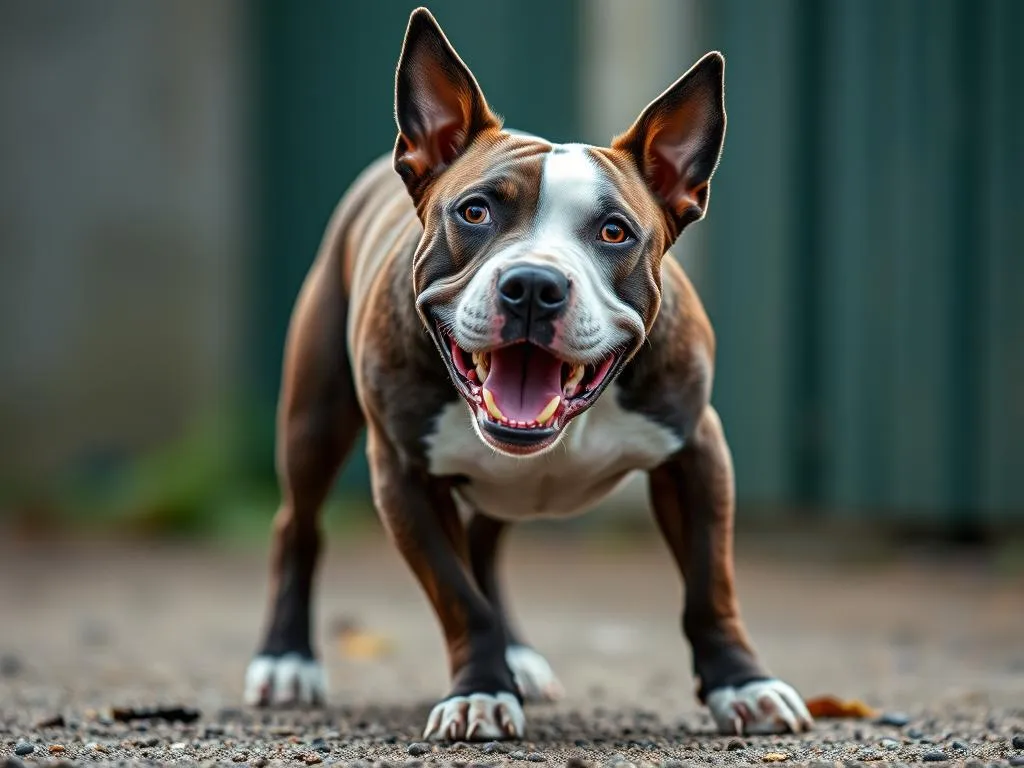
Introduction
Bull Terriers are a unique and energetic breed known for their distinctive appearance and playful nature. Originating in the early 19th century, these dogs were initially bred for bull-baiting and later as companions. Their strong, muscular build and egg-shaped head give them a striking presence, but it’s their vibrant personality that truly defines them. Bull Terrier training is essential for ensuring that these dogs grow into well-mannered companions.
While Bull Terriers are affectionate and loyal, they can also exhibit challenging behaviors if not properly trained. Training not only enhances the bond between the dog and owner but also helps mitigate behavioral issues that may arise from their strong-willed nature. Understanding the specific needs and characteristics of Bull Terriers is crucial for successful training.
Understanding Bull Terrier Behavior
Personality Traits
Bull Terriers are known for their exuberance and playful spirit. They possess high energy levels, which means they require regular exercise and mental stimulation to stay happy and healthy. Their playful demeanor often leads to affectionate and entertaining interactions with their families.
However, this breed can also display stubbornness and independence. Bull Terriers are intelligent, but their strong-willed nature can make them resistant to commands. This stubbornness requires owners to employ patience and creativity during training sessions.
Social nature is another defining trait of Bull Terriers. They tend to enjoy the company of people and can get along well with other pets if socialized properly. However, early socialization is crucial to prevent potential aggression or territorial behavior as they mature.
Common Behavioral Issues
Despite their many positive attributes, Bull Terriers can develop certain behavioral issues if not adequately trained. Some common concerns include:
- Aggression and Territorial Behavior: Bull Terriers can be protective of their home and family. If not properly socialized, they may display aggressive behaviors towards strangers or other animals.
- Separation Anxiety: These dogs thrive on companionship and may experience anxiety when left alone. This can lead to destructive behaviors and excessive barking.
- Destructive Tendencies: Boredom and lack of stimulation can lead to chewing and digging, which are common among Bull Terriers.
Understanding these behavioral traits is the first step in addressing and managing them effectively through training.
Preparing for Training
Choosing the Right Training Tools
Selecting appropriate training tools is vital for a successful training experience. Here are essential items to consider:
- Collars and Leashes: A sturdy collar and leash are necessary for walks and training sessions. Consider using a harness for added control.
- Treats and Rewards: Positive reinforcement is key in Bull Terrier training. Use high-value treats to reward good behavior and encourage learning.
- Training Aids: Clickers and interactive toys can enhance training sessions and keep your dog engaged.
Setting the Right Environment
Creating an ideal training environment can significantly impact your dog’s learning process.
- Distraction-Free Zone: Choose a quiet space for training where your Bull Terrier can focus without interruptions.
- Safe Spaces: Designate a safe area for your dog to relax and feel secure, which can help reduce anxiety during training.
Basic Training Techniques
Positive Reinforcement
Positive reinforcement is one of the most effective training methods. This technique involves rewarding desired behaviors rather than punishing unwanted ones.
- Examples of Effective Rewards: Treats, praise, and playtime can all serve as rewards. Find what motivates your Bull Terrier the most and use it to encourage good behavior.
Consistency and Routine
Establishing a consistent training routine is crucial for success.
- Training Schedule: Regular training sessions help reinforce learning and establish good habits. Aim for short, frequent sessions to maintain your dog’s attention.
- Consistent Commands: Use the same commands for specific actions. This clarity will help your Bull Terrier understand what is expected of them.
Socialization
Socializing your Bull Terrier is essential for their development. Early exposure to different environments, people, and animals can prevent behavioral issues later in life.
- Tips for Effective Socialization: Introduce your dog to new experiences gradually. Attend puppy classes, visit dog parks, and invite friends over to help your dog become comfortable in various situations.
Advanced Training Techniques
Dealing with Stubbornness
Training a stubborn Bull Terrier can be a challenge, but it is manageable with the right approach.
- Strategies for Overcoming Stubborn Behavior: Use engaging and varied training methods to keep your dog interested. Incorporate games and challenges to stimulate their mind.
- Patience and Persistence: Remember that building a strong bond with your dog takes time. Stay calm and patient, and celebrate small victories along the way.
Behavioral Modification
If your Bull Terrier exhibits aggressive behaviors or destructive tendencies, behavioral modification techniques can help.
- Techniques for Addressing Aggressive Behaviors: Identify triggers that cause aggression and work on desensitizing your dog to those situations. Gradually expose them to the triggers in a controlled manner while rewarding calm behavior.
- Redirecting Destructive Tendencies: Provide appropriate outlets for your dog’s energy. Engage them in interactive play and offer plenty of chew toys to deter unwanted chewing.
Advanced Commands and Tricks
Once your Bull Terrier has mastered basic commands, consider teaching them advanced commands and tricks.
- Suggested Advanced Commands: Teach commands like “roll over”, “play dead”, or “fetch”. These can be fun ways to challenge your dog and strengthen your bond.
- Incorporating Fun and Play: Make training sessions enjoyable by integrating playtime. Use toys during training to keep your dog excited and motivated.
Common Training Challenges
Overcoming Distractions
Training in a distracting environment can be difficult for Bull Terriers.
- Strategies for Maintaining Focus: Start training in a quiet area and gradually introduce distractions as your dog becomes more proficient. Use high-value rewards to keep their attention.
- Training in Different Environments: Once your dog has mastered commands in a controlled setting, practice in various locations to ensure they can perform well regardless of distractions.
Handling Resistance
Recognizing and addressing resistance in your Bull Terrier is crucial for effective training.
- Signs of Resistance: If your dog seems disinterested or ignores commands, it may indicate resistance. Look for body language cues such as turning away or lying down.
- Techniques for Motivating Your Dog: Use treats, praise, and short training sessions to keep your Bull Terrier engaged. Sometimes, changing the training method can reignite their interest.
Maintaining Training Progress
Regular Practice
Ongoing training is essential for maintaining progress.
- Importance of Ongoing Training: Incorporate training into daily routines, such as practicing commands during walks or playtime. This will reinforce learned behaviors and keep your dog sharp.
- Incorporating Training into Daily Routines: Use everyday activities as training opportunities. For example, ask your dog to sit before meals or to stay while you open the door.
Tracking Progress
Monitoring your Bull Terrier’s progress can help you adjust your training methods accordingly.
- Methods for Monitoring Improvement: Keep a training journal to track your dog’s responses to commands and behaviors. Note any challenges or breakthroughs experienced during training sessions.
- Adjusting Training Methods: If your dog struggles with a particular command, consider modifying your approach. Experiment with different rewards or training techniques to find what resonates best with your Bull Terrier.
Conclusion
Proper Bull Terrier training is essential for fostering a strong bond between you and your dog while ensuring a well-mannered companion. Understanding their unique behavioral traits, preparing for training, and employing effective techniques can lead to a successful training experience.
Patience and consistency are key, as training is an ongoing process that evolves with your dog’s growth. By committing to this journey, you will not only create a more obedient dog but also deepen your relationship, making for a happier household for both you and your Bull Terrier.









